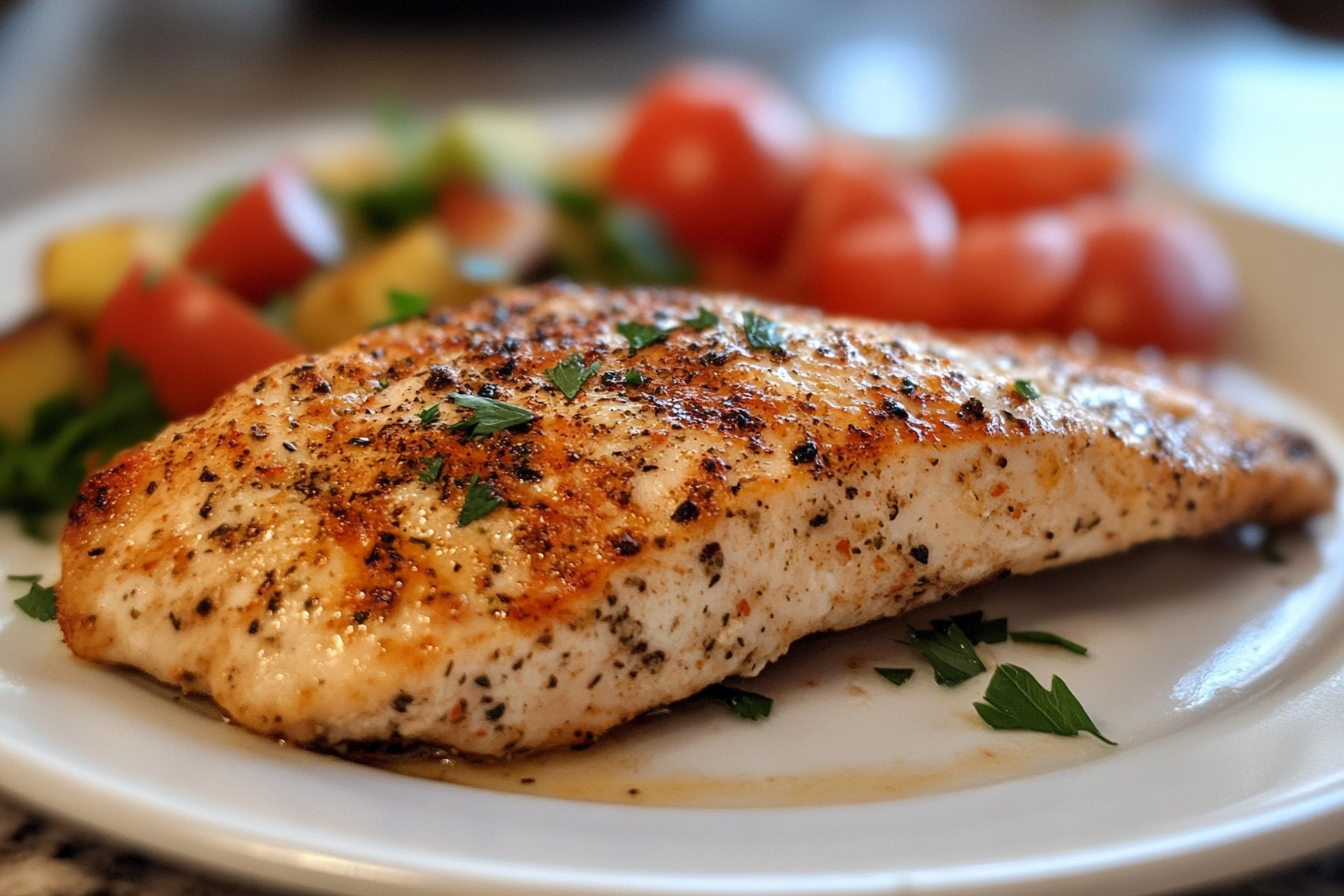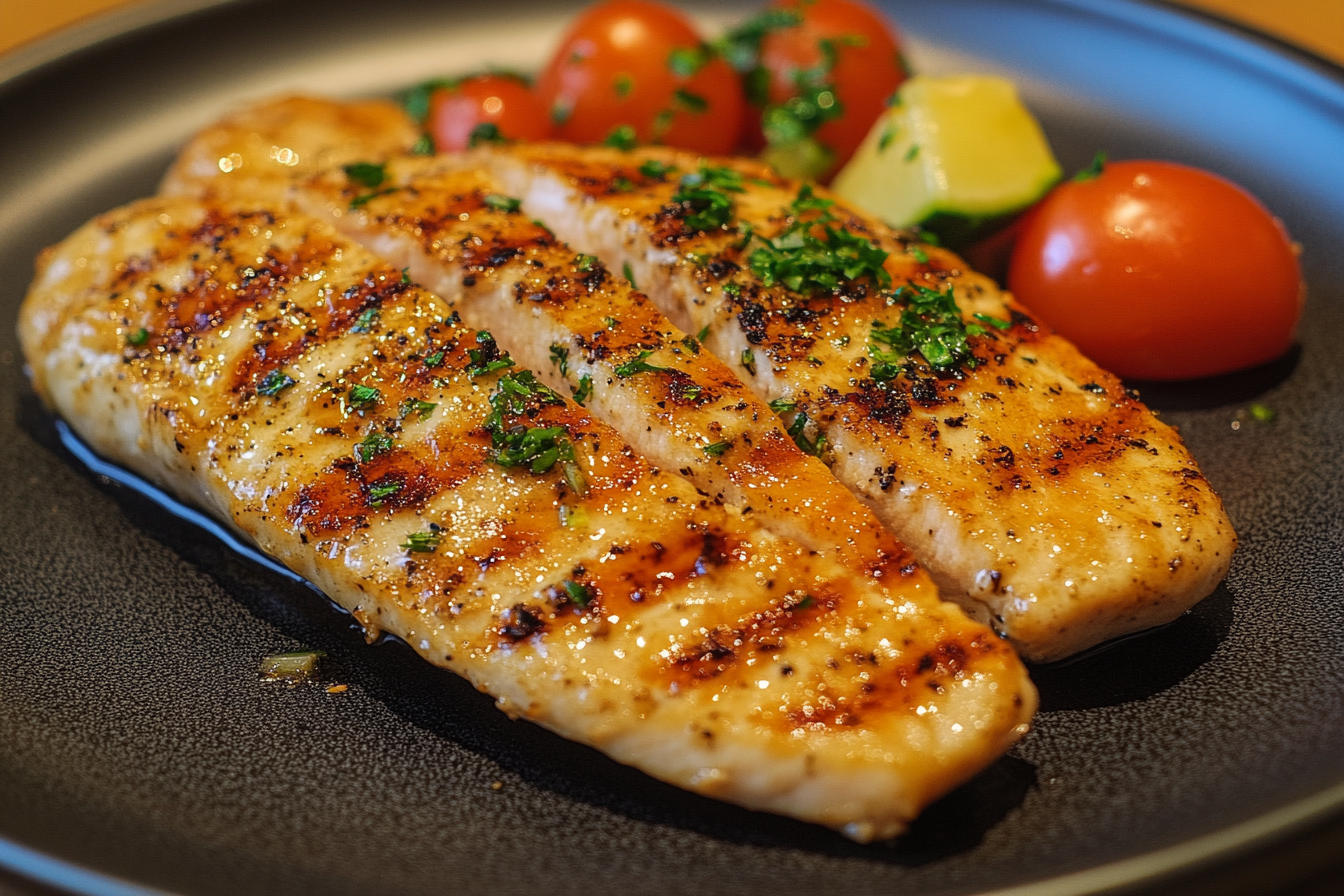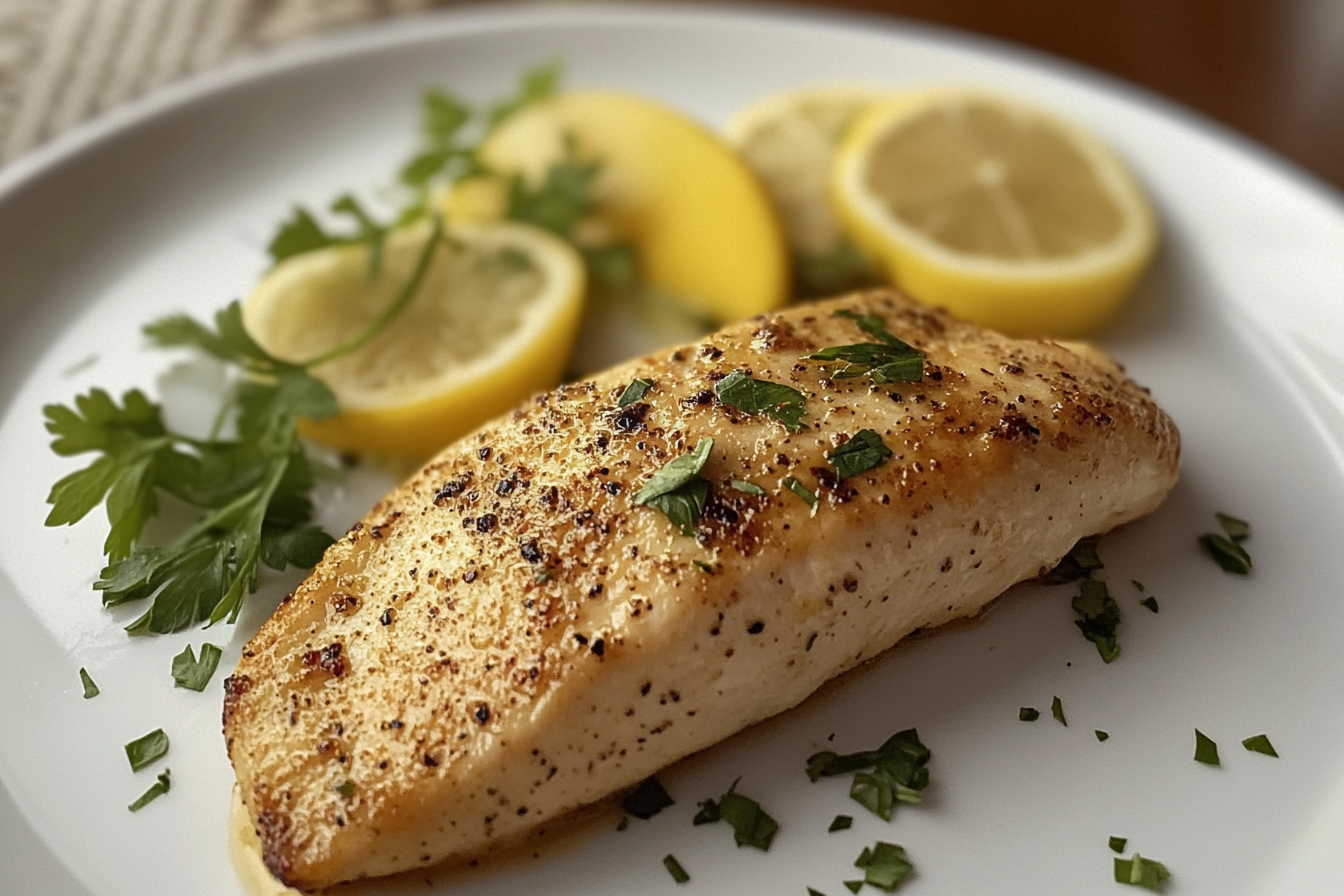When you browse the poultry section in a grocery store, you will notice a variety of cuts with labels like chicken fillet and chicken breast. For many people, these terms can be confusing, and it’s easy to wonder if they refer to the same thing. Both come from the chicken’s chest area, but their size, texture, and culinary applications set them apart. In this comprehensive guide, we’ll explore whether chicken fillet and chicken breast are the same and delve into the best ways to use each cut. By the end, you’ll know exactly which cut to choose for your next meal.
Chicken Anatomy: Where Do Breast and Fillet Come From?
Understanding the basic anatomy of a chicken will help clarify where each cut originates.
- Chicken breast: The breast is the large, meaty portion located on the front of the chicken. It runs along the bird’s sternum and is one of the most commonly consumed cuts due to its lean nature and versatility in cooking.
- Chicken fillet (tenderloin): The fillet is a smaller, more delicate muscle found beneath the breast. It is also known as the tenderloin, and true to its name, it’s a tender cut that’s smaller and thinner than the breast.
While the two cuts come from the same general area, the fillet is essentially a smaller section of the breast. The breast can be purchased as a whole or sliced into fillets, which is one of the reasons for the confusion between the two terms. For more detailed information on chicken cuts, check out this guide on Chicken Fillet Everything You Need to Know.
Chicken Breast: Definition, Characteristics, and Uses
The chicken breast is one of the most widely used cuts in recipes across the world. Its versatility, coupled with its high protein content and low fat, makes it the go-to option for fitness enthusiasts, dieters, and home cooks alike.
Key Characteristics:
- Size: A chicken breast is one of the largest cuts available. It is thick, making it suitable for recipes where you need a hearty serving of meat.
- Texture: When cooked correctly, a chicken breast is firm yet juicy. However, if overcooked, it can become dry and tough due to its low-fat content.
- Nutritional Value: A standard 100-gram serving of chicken breast contains approximately 165 calories, 31 grams of protein, and 3.6 grams of fat. It’s an excellent source of lean protein, contributing to muscle growth and weight loss.
Culinary Uses of Chicken Breast:
- Grilling and Baking: Due to its thickness, the chicken breast is perfect for grilling or baking. When marinated properly, it absorbs flavors well and can be cooked on a grill or baked in the oven without losing moisture.
- Stuffing: The large size of the breast makes it ideal for stuffing with vegetables, cheese, or other ingredients. This is a popular method for creating dishes like stuffed chicken breast with spinach and cheese.
- Salads and Sandwiches: Once grilled or baked, chicken breast can be sliced and added to salads or sandwiches for a protein-packed meal.
You can explore more versatile ways to cook chicken breast with dishes like this delightful Blackened Chicken Alfredo, which showcases the robust flavors of well-prepared chicken breast.
Chicken Fillet: Definition, Characteristics, and Uses
The chicken fillet (or tenderloin) is another highly sought-after cut, particularly for those looking for a quicker-cooking option or a more tender bite. Despite being part of the breast, the fillet is thinner and often more flavorful, making it a fantastic choice for many recipes.
Key Characteristics:
- Size: As the smaller counterpart of the breast, the fillet is thin and tender. It is commonly cut horizontally from the chicken breast or purchased as a standalone cut.
- Texture: Chicken fillet is often considered more tender than the breast due to its thinner, less fibrous nature.
- Nutritional Value: The nutritional value is comparable to the breast, but due to the smaller size, the calorie count is lower per serving. A 100-gram fillet will have roughly 150 calories, 30 grams of protein, and 3 grams of fat.
Culinary Uses of Chicken Fillet:
- Stir-fries: The thinness of the fillet makes it an excellent option for quick-cooking methods such as stir-frying. It cooks fast and stays juicy, absorbing sauces and spices well.
- Pan-frying and Breaded Fillets: Breaded chicken fillets are perfect for dishes like chicken fingers or crispy chicken sandwiches. The thinness allows for a crisp exterior while maintaining a juicy, tender interior.
- Quick Weeknight Meals: If you’re pressed for time, chicken fillets can be a lifesaver. Because they cook faster than breasts, they’re ideal for weeknight meals where time is limited.
To learn more about how to use chicken fillet effectively in different recipes, check out the Brisket Sandwich Recipe for inspiration on pairing cuts for a delicious sandwich.
Key Differences Between Chicken Fillet and Chicken Breast
At first glance, chicken fillet and chicken breast might seem interchangeable. However, their differences in size, texture, and cooking time make each better suited to particular recipes and techniques. Below is a detailed breakdown of their key differences.
Size and Shape:
- The chicken breast is much larger and thicker, making it ideal for hearty meals where you need a substantial serving of meat. In contrast, the chicken fillet is thinner and smaller, making it more versatile for quick recipes.
Texture:
- The chicken fillet tends to be more tender due to its smaller muscle fibers. This makes it a better choice for recipes requiring softer textures, such as stir-fries or sandwiches. The chicken breast, while firm, can become dry and tough if overcooked, requiring careful attention to cooking times.
Cooking Time:
- A significant difference between these two cuts is their cooking time. Due to its thickness, chicken breast takes longer to cook. On the other hand, the thinness of the chicken fillet allows it to cook much faster, making it a great option for quick meals.
Flavor Absorption:
- The chicken fillet, being thinner, often absorbs marinades and spices more effectively. Chicken breast, with its thicker size, may need longer marination times or more seasoning to achieve the same depth of flavor.
Nutritional Value:
- Both cuts are excellent sources of lean protein. The main difference lies in portion size. A larger chicken breast will provide more protein per serving compared to the smaller chicken fillet, but the fillet offers a similar macronutrient profile.
By understanding these differences, you can choose the right cut based on your cooking needs. Whether you need something quick or substantial, there’s a place for both cuts in the kitchen.
Can You Use Chicken Fillet and Breast Interchangeably?
One of the most common questions is whether chicken fillet and chicken breast can be used interchangeably in recipes. The short answer is yes, but with some important considerations.
When You Can Substitute:
- Grilled Dishes: For dishes like grilled chicken sandwiches or salads, both chicken fillet and chicken breast can be used with similar results. Just be mindful of the cooking time differences, as fillets will cook much faster.
- Baking: If a recipe calls for baking chicken breasts, you can substitute with fillets, but you’ll need to reduce the cooking time to avoid overcooking. Keep an eye on the fillets, as they can dry out quickly if baked for too long.
When You Shouldn’t Substitute:
- Stuffed Dishes: The large size of the chicken breast makes it perfect for stuffed recipes. You’ll find it challenging to use chicken fillet in these dishes, as the fillet is too small to hold stuffing effectively.
- Roasting: If you’re preparing a roasted chicken breast dish, swapping for chicken fillet might not provide the same hearty serving or texture.
By keeping these points in mind, you can easily switch between the two cuts depending on your recipe and cooking method.
Cooking Chicken Fillet vs. Cooking Chicken Breast
The way you cook chicken fillet and chicken breast can have a significant impact on the final result. Both cuts require different techniques to bring out their best qualities. Here are some key tips for each.
Chicken Breast Cooking Tips:
- Grilling: Grilling is one of the best methods for cooking chicken breast. Preheat the grill to medium-high heat, brush the chicken with oil, and cook each side for about 6-7 minutes until it reaches an internal temperature of 165°F (74°C). Make sure not to overcook it, as the breast can dry out easily.
- Baking: When baking chicken breast, marinate it first to ensure it stays juicy. Bake in a preheated oven at 375°F (190°C) for 25-30 minutes, depending on the thickness. Using foil or parchment paper can help retain moisture.
- Slicing: For faster cooking, slice the breast into thin cutlets before grilling or frying. This will reduce cooking time and ensure even cooking.
Chicken Fillet Cooking Tips:
- Pan-frying: Due to its thinness, chicken fillet is ideal for pan-frying. Heat a skillet over medium-high heat with a small amount of oil. Cook each side for about 2-3 minutes until golden brown and cooked through. This method ensures a tender, juicy result.
- Breaded Fillets: Breaded fillets are great for making crispy chicken fingers or sandwiches. Dip the fillets in egg wash, coat with breadcrumbs, and fry in hot oil for a crunchy exterior.
- Quick Stir-fry: For stir-fries, chicken fillet is perfect. Slice the fillet into thin strips, and stir-fry in a hot pan with oil and your favorite vegetables and sauces for a quick, flavorful meal.
By adjusting your cooking methods based on the cut, you can enjoy delicious chicken dishes every time.
For a more in-depth look at the difference between tenderloin and chicken breast, read this article.
Nutritional Comparison: Fillet vs. Breast
Both chicken fillet and chicken breast are excellent sources of lean protein, making them popular among people looking to maintain or improve their health. However, the two cuts differ slightly in nutritional value due to their size and composition.
Calories:
- Chicken breast contains around 165 calories per 100 grams, while chicken fillet has about 150 calories per 100 grams. The smaller size of the fillet means a lower caloric intake, which can be beneficial for portion control.
Protein:
- Both cuts are rich in protein, with chicken breast providing around 31 grams of protein per 100 grams and chicken fillet offering slightly less at 30 grams. Protein is essential for muscle repair, building, and overall health, making both cuts excellent choices for athletes and fitness enthusiasts.
Fat Content:
- Both chicken fillet and chicken breast are low in fat, with chicken breast containing about 3.6 grams of fat per 100 grams and chicken fillet slightly less at around 3 grams. This makes them heart-healthy options, especially for those following a low-fat diet.
In terms of vitamins and minerals, both cuts provide important nutrients such as vitamin B6, phosphorus, and niacin, which are essential for maintaining energy levels, bone health, and metabolic function.
The Role of Chicken Tenderloin in Recipes
The chicken fillet, also known as the tenderloin, has a unique role in cooking due to its tenderness and size. Its smaller, thinner nature makes it perfect for dishes that require a more delicate texture. Here are some examples of popular recipes where chicken tenderloin shines:
- Chicken Tenders: These breaded and fried fillets are a favorite in fast-food restaurants and home kitchens alike. They are crispy on the outside and juicy on the inside, making them a hit with both kids and adults.
- Stir-fries: As mentioned earlier, chicken fillets are ideal for quick stir-fries. Their tenderness ensures they won’t become tough or chewy when cooked over high heat.
- Skewers and Kebabs: The small size of the fillets makes them easy to thread onto skewers for grilling or broiling. They cook evenly and quickly, making them perfect for summer barbecues.
For more tenderloin recipe ideas, check out this Chicken Fillet Everything You Need to Know for inspiration on how to incorporate this cut into your cooking repertoire.
FAQs: Chicken Fillet vs. Chicken Breast
Are chicken fillet and chicken breast the same?
No, they are not. While both come from the same area of the bird, chicken fillet is a smaller, thinner section of the breast, often referred to as the tenderloin.
What’s the difference between chicken breast and tenderloin?
The tenderloin, or fillet, is smaller and more tender than the chicken breast. It also cooks faster and absorbs marinades more easily.
Can I substitute chicken fillet for chicken breast in recipes?
Yes, but consider the cooking time and portion size. Chicken fillet cooks faster and may require a shorter cooking time compared to chicken breast.
What’s healthier: chicken fillet or chicken breast?
Both are healthy options, offering lean protein with minimal fat. The main difference is in portion size, with chicken breast providing more protein and calories per serving.
How do I cook chicken fillet and breast differently?
Chicken fillet is ideal for quick-cooking methods like pan-frying or stir-frying, while chicken breast works well for grilling, baking, or stuffing.
Conclusion: Choosing Between Chicken Fillet and Breast
In summary, both chicken fillet and chicken breast are fantastic options for different types of meals. Chicken breast is best when you need a hearty, protein-packed portion, while chicken fillet offers a more tender bite and faster cooking time. The right choice depends on your recipe, cooking method, and nutritional goals.
By understanding the key differences between these cuts, you can make more informed decisions in the kitchen, ensuring that your meals are both delicious and nutritious. Whether you’re grilling a whole chicken breast for a summer barbecue or pan-frying chicken fillets for a quick stir-fry, you’ll have the confidence to cook with either cut like a pro.



